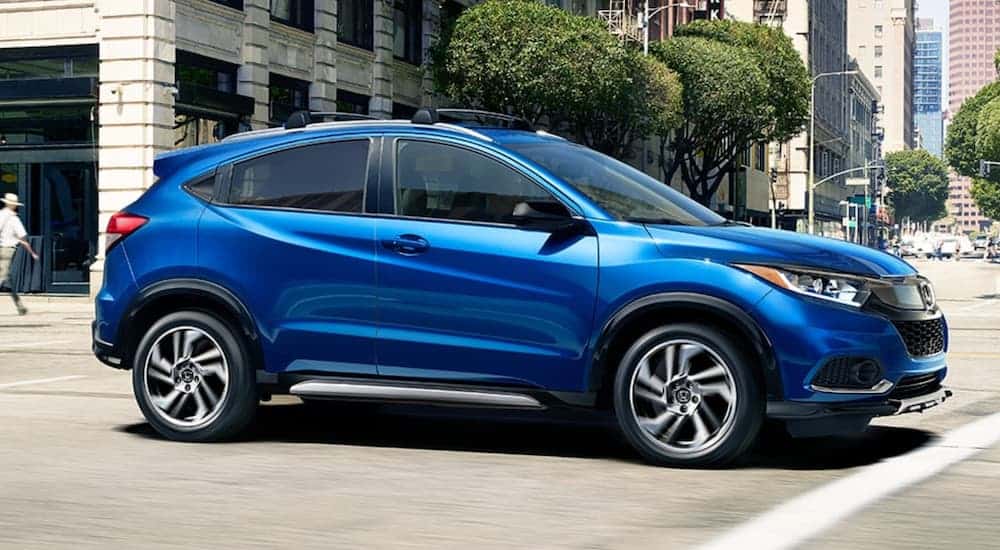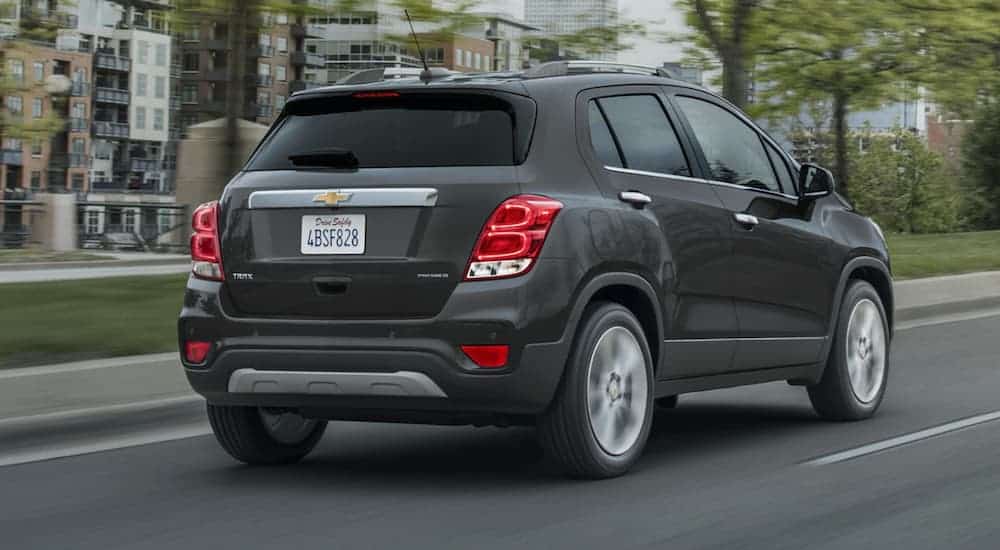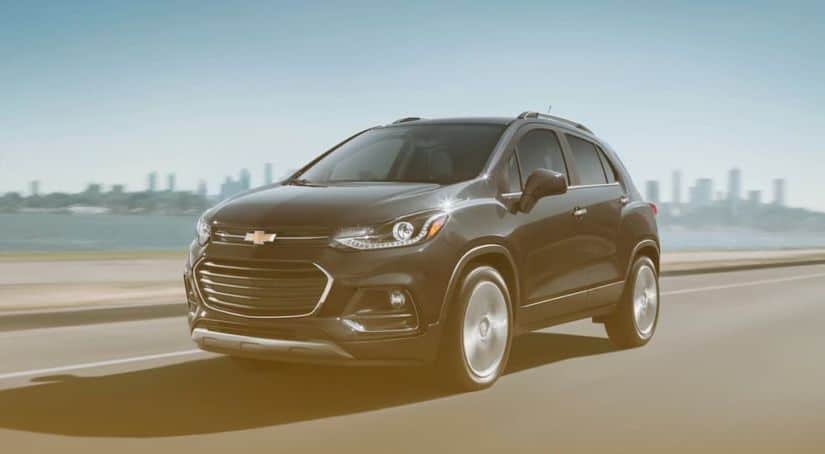What can you expect from your compact SUV? Well, these kinds of vehicles are often expected to be able to do it all, a jack of all trades of sorts. These models manage to balance everything under the sun, including fuel economy, decent power delivery, and utility, all while being jam-packed into a tiny package. As you may already know, this kind of vehicle is increasingly popular, crowding the lineups and showrooms of manufacturers and dealerships everywhere. Two competing models in this field are the 2020 Chevy Trax vs 2020 Honda HR-V. Here are two nearly bite-sized SUVs that try to walk that fine line of doing everything and then some. We’ll take a deeper look at how these two vehicles compare, and whether or not they live up to the promise and expectation of an ideal compact SUV.
What You See is What You Get
The 2020 Honda HR-V and the 2020 Chevy Trax are quite different in terms of style and design, which is quite refreshing considering the increasing sameness that’s extended across many compact and mid-sized SUV models. The 2020 Chevy Trax is a 4-door model that comes in at a rather economic MSRP of $21,300. While this price isn’t exactly the lowest out there, it is still within the affordable range, which is a huge plus for buyers. The trim options are fairly solid, giving you three-simple options to choose from, which include the LS, LT, and Premier. While other manufacturers have the tendency to muddy the waters with an overwhelming number of trims to choose from, we’re refreshed to see Chevrolet continue to keep things simple as they had in the past.
The Honda HR-V may be one of the most unique compact SUVs on the road today, due in major part to the window-aligned rear door handles. It’s a curious design choice that dramatically changes the appearance of the Honda HR-V when compared to other models, and may be a bit polarizing in some circles. The price tag is a bit of a bonus, coming in at the low-low cost of $20,820 MSRP, making it a little cheaper than its competitor. Although, with five trim options to choose from, the offerings feel a bit crowded. These trims include the LX, Sport, EX, EX-L, and Touring. While these factors may set the Honda HR-V back, we’ll have to check in on the performance of both of these compact SUVs to see a real difference.

Zippy, Small, and Fuel Efficient
Neither of these vehicles is going to be caught doing any heavy lifting or speed racing, but we should still expect some reasonable engines and powertrains packed inside each model. Taking a peek at the performance of the Honda HR-V, you’ll find a base model equipped with a 1.8-liter inline-4 engine that gets up to 141 horsepower and 127 lb-ft of torque. Unfortunately, this small and punchy engine is paired with a rather clunky CVT transmission. What results is some rather lackluster performance, that struggles to get up to speed even when you press that pedal to the floor. That said, you can pack the Honda HR-V with all-wheel drive, which provides better handling and control all around, especially when taking on difficult road conditions. Fuel economy is probably the best point of the Honda HR-V’s performance, earning 30 MPG combined in base models.
The Chevy Trax isn’t too far behind the Honda HR-V when it comes to engine power delivery. Like its competitor, the Chevy Trax comes with a single four-cylinder engine option, although Chevy decided to pack in a 1.4-liter turbo-4 engine, which is responsible for 138 horsepower and 148 lb-ft of torque and trust us when we say that extra 20 or so of torque really pays off. The turbo engine is also well-equipped with a 6-speed automatic transmission, which does more than get the job done. Should you choose to upgrade the Chevy Trax, you can trade in that front-wheel drive for all-wheel drive that can vastly improve the feel behind the wheel. The Chevy Trax doesn’t fall to far behind the HR-V in terms of estimated fuel economy; in fact, you might not even notice a difference at all, considering the Trax gets up to 28 MPG combined.

Tech and Interior Features
While neither of these vehicles is big, they still ought to provide plenty of modern comforts. The 2020 Honda HR-V does a decent job in this area, providing buyers with a maximum cargo spacing of 58.8 cubic feet. Although, don’t expect a lot of comfort for rear passengers. While legroom is not too much of an issue, the limited 47.4 inches of hip room can make the interior feel a bit cramped. Beyond spacing, things are pretty run of the mill with cloth upholstery in basic models and higher-end leather if you should choose to upgrade. Where things fall off a bit is in the base model’s infotainment and safety tech features.
The entry-level Honda HR-V LX comes with a measly 5.0-inch touchscreen that doesn’t get included with Apple CarPlay or Android Auto compatible software. And when it comes to active safety and driver assistance features, expect to pay well-beyond that economic starting price. Features like active lane control and adaptive cruise control can’t be found until you upgrade to the EX, EX-L, or Touring trim levels.
The Chevy Trax, on the other hand, is much smaller than its competitor, so as a result, you can expect far tighter spaces. For instance, rear legroom only measures in at 35.7 inches, but hip room measures up to 50.7 inches, and the maximum amount of cargo capacity stops at 48.4 cubic feet.
Like the Honda HR-V to you can enjoy cloth or leather depending on how much you decide to spend at the time of purchase. What the Chevy Trax gets right is in what’s offered in the technology front. For instance, base models are installed with a 7.0-inch infotainment touchscreen that gets smartphone integration in the form of Apple CarPlay and Android Auto. Higher trims also get a Bose audio system, a moonroof, and heated front seats. Although, the Chevy Trax falters a bit when it comes to safety technology, as it falls into the same boat as the Honda HR-V. While other models offer features like forward-collision and lane-departure warning systems as standard, Chevy requires that you pay extra to get it. Then again, these kind of baseline packages is expected to be svelte considering that low entry-price.
Which is the Superior Compact SUV?
Tech features, trim levels, and performance all matter, and unfortunately, the Honda HR-V falls a little bit behind in these categories. While it does come at a pretty solid entry-price it is only marginally lower than the base model of the Chevy Trax. The Chevy Trax, on the other hand, manages to rise a step ahead of its Honda competitor. From the more robust powertrain option to the fact that you can link your infotainment system with your smartphone on the base model, in our opinion, the Chevy Trax outpaces the Honda HR-V in more ways than one.



